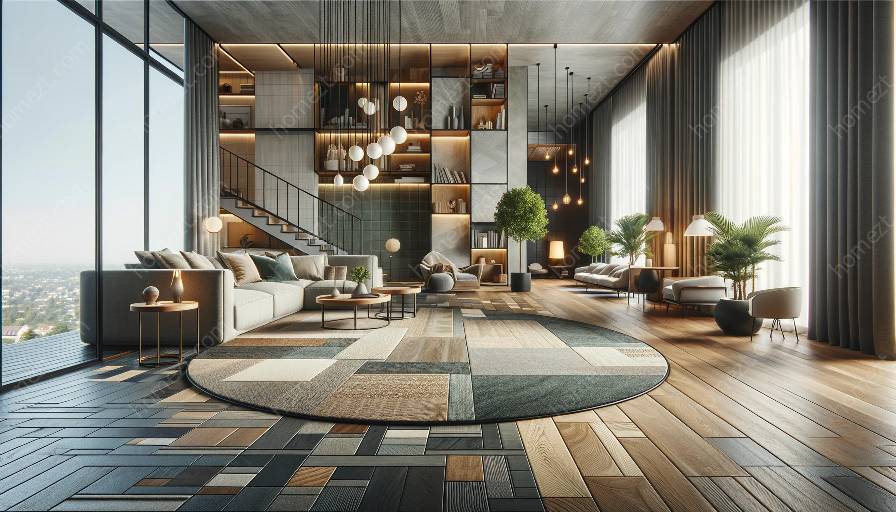When it comes to home design, flooring plays a crucial role in both aesthetics and functionality. The transition between different flooring materials can significantly impact the overall appeal of a space. Whether you're renovating a room, building a new home, or just looking for ways to revamp your current flooring, creating a harmonious transition between different flooring materials is key to achieving a cohesive and attractive look.
Understanding Flooring Options
Before delving into the art of creating seamless transitions, it's important to consider the flooring options available. Each material has its unique characteristics, and your choice of flooring can greatly influence the transition strategy.
1. Hardwood Flooring
Hardwood flooring exudes elegance and warmth, making it a popular choice for many homeowners. Whether you opt for traditional oak, exotic maple, or trendy bamboo, hardwood floors add timeless beauty to any space.
2. Tile Flooring
Tile flooring comes in a wide array of materials, including ceramic, porcelain, and natural stone. Its durability and easy maintenance make it a practical choice for kitchens, bathrooms, and high-traffic areas.
3. Laminate Flooring
Laminate flooring offers the look of real wood or stone but with easy installation and low maintenance. It's a cost-effective alternative to traditional hardwood or tile.
4. Vinyl Flooring
Vinyl flooring is known for its versatility, offering a wide range of colors and patterns. It's a resilient and budget-friendly option suitable for various rooms in your home.
5. Carpet Flooring
Carpet provides comfort and warmth, especially in bedrooms and living areas. It comes in different styles, textures, and colors to suit your design preferences.
Factors to Consider for a Harmonious Transition
Once you've selected the flooring materials for different areas of your home, it's time to plan the transitions between them. Here are some essential factors to consider:
1. Color and Tone
Ensure that the colors and tones of the adjacent flooring materials complement each other. A seamless transition can be achieved by selecting colors that harmonize or create a deliberate contrast for a visually striking effect.
2. Texture and Finish
Consider the texture and finish of the flooring materials. Smooth transitions between materials with similar textures can create a cohesive look, while contrasting textures can be used to delineate different zones in an open floor plan.
3. Height Variation
When dealing with flooring materials of different heights, it's important to address the elevation changes in a smooth and visually appealing manner. This may involve using transition strips, reducers, or other transition pieces to bridge the gaps.
4. Room Functionality
Take into account the functionality of each space. For example, transitioning from a hard surface like tile to carpet in a bedroom requires careful consideration to ensure a seamless yet functional shift.
Decorating to Enhance Transitions
Once the flooring transitions are in place, decorating techniques can further enhance the cohesion and visual interest of the space. Here are some ideas to consider:
1. Area Rugs
Area rugs can be used to define specific areas within an open floor plan or to create a smooth transition between different flooring materials. They also add an extra layer of texture and style to the room.
2. Decorative Accents
Strategically placed decor items such as vases, potted plants, or sculptures can help bridge the visual gap between different flooring materials. These accents draw the eye and create a sense of continuity throughout the space.
3. Lighting Elements
Integrating lighting elements, such as floor lamps or recessed lighting, can highlight the transitions and add an inviting ambiance to the room. Lighting can effectively showcase the beauty of each flooring material while maintaining a cohesive transition.
4. Furniture Placement
The arrangement of furniture can play a significant role in connecting various flooring areas. Thoughtful placement of furniture pieces can guide the flow of movement and create a harmonious visual transition.
Conclusion
Creating a harmonious transition between different flooring materials involves a combination of thoughtful selection, strategic planning, and creative decorating. By understanding the characteristics of various flooring options, considering important factors for seamless transitions, and incorporating decorating techniques, you can achieve an attractive and real way to enhance the overall aesthetics and functionality of your space.






































